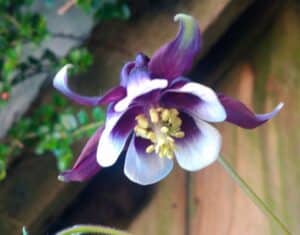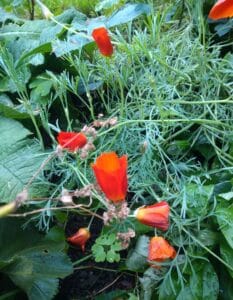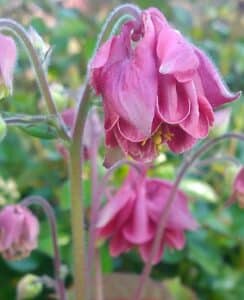Autumn can be a busy time in a greenhouse. There’s the routine cleaning and tidying up for starters; leaving musty corners and unswept floors allows bugs and bacteria to thrive, some of which can cause no end of problems for the new seedlings you’re getting ready to sow. But, once the plant pots and seed trays are washed and new compost is purchased, you are all set to plan for next year’s borders and beds.
Growing plants from seed is therapeutically satisfying, with a real sense of achievement, and a greenhouse will give shelter and protection from the cold, wet weather for seedlings and gardeners alike…..but that’s not to say it’s always straightforward! Seedlings may germinate quickly only to ‘damp off’ and disappear due to fungal infection (a clean greenhouse is a happy greenhouse!) Others grow leggy and topple over and some don’t even bother to sprout. Still every year, as summer fades, gardeners return to their seed catalogues with as much optimism as ever, knowing that to sow seeds in autumn mimics the natural process of stratification, where seeds fall to the ground and await a period of cold weather to trigger germination as the ground warms up in spring.

Seeds from perennials (plants that die back for Winter and return each Spring) and those that dwell in colder regions are especially suited to autumn sowing; Achillea, Angelica, Aquilegia, Bidens, Crocosmia, Foxglove, Hellebores, Hollyhocks, Knautia, Solomon’s seal, and Valerian. Hardy annuals, like Calendula, Cerinthe, Nasturtiums, Nigella and Sunflowers are plants that go through their entire life cycle in one season and can be sown now ready for planting out next summer. They will produce lots of seeds ready to collect and grow in the following year.

2. Sprinkle seeds evenly over the damp potting compost and cover them very lightly with more mix.
3. Use a clear plastic wrap (like a small food storage bag) to cover the soil and retain moisture while the seeds begin to germinate.
4. Place the tray in a good light.
5. Don’t let the compost dry out, but take care not to over water either!
6. Wait patiently.
7. It takes the majority of perennial seeds three to five weeks to germinate. Most annuals have a fast, high germination rate however some perennials may have a germination rate as low as 50%.
8. When germination occurs, the first leaves you see pushing up through the soil will be simple, and don’t look the same as mature ones. True leaves will follow later.

10. When the seedlings are large enough to handle, they can be pricked out and potted up into larger individual pots, or transplanted outdoors. Always harden them off for a few days and make sure they are watered every day when first planted outside. Use the handle of a spoon to ease the seedings out of the soil without damaging the roots, and hold them gently by the first leaves, not the stem, before transplanting them into their new position. Make a small hole, tuck the roots in and then firm the soil around the base of the plant.
Good luck! There’s lots of extra advice out there, you’ll find instructions on the backs of seed packets and for self collected seeds there is specific advice from the RHS and on websites like gardenersworld.com
The CPR greenhouse project is continuing under Covid-19 restrictions. This means only one volunteer can be inside the greenhouse at a time. Please contact [email protected] for more information.



